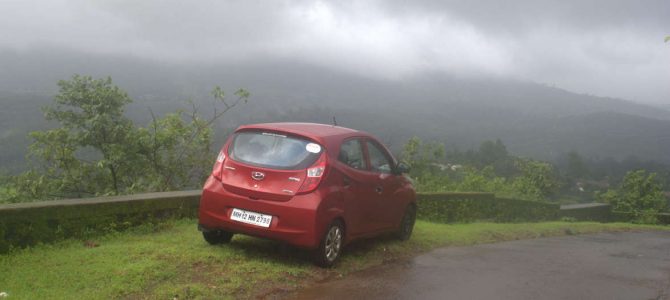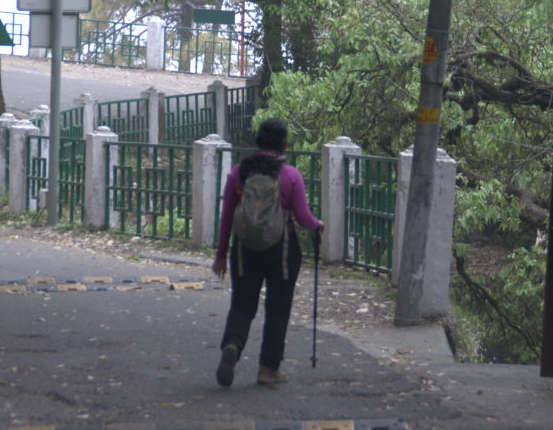As we have pointed out in our We Are The Living blog, the one habit that gave us the freedom to travel is keeping note of of our expenses. We kept up with the habit during our travel too and have an accurate picture of our costs. What was surprising even for us is that the entire year’s travel cost less than what it did to live in a city. Yes, it indeed cost us less than a brand new Maruti Alto. And it is possible to do even cheaper.
Urban lifestyle vs Travel Lifestyle
We had a fairly simple lifestyle in the city. We never hired a maid or a cook. We almost always cooked meals at home during the weekdays and on weekend afternoons. Eating out was a weekend evening thing. We commuted to office/railway station by bicycle. We bulk shopped our groceries at super markets or online at less than MRP (maximum retail price). We used the free / subsidised gym membership in the club of our housing society. And yet, our travel which was fairly basic costed us far less than our already simplified urban lifestyle. Let’s look at the key travel choices that made this possible.
Value Relationships
We took the opportunity of travel to visit our friends and family who lived across the country. Many were generous to share their home with us for a few days and several others invited us home for a meal and get-together. Many were friends of us before our marriage. So the other spouse was meeting those friends for the first time. It was a great opportunity to reconnect with our childhood and other fun times.

Neelam and Rajkumar were our first friend hosts during India 360. There are several more, but I can’t include all their photos in this small post 🙂 Thanks to everyone!
Ken Honda, the Japanese Author says,
“If you have 50 friends who can give you a couch to stay for a week, you have at least one year’s time to get back on your feet.”
This is one of the tricks he recommends for overcoming money anxiety and about being homeless. Although it is not possible to have friends in every place you will be travelling, you should reach out the ones who happen to. Your friends will probably be very happy to welcome you for a few days. This is one of the key reasons our travel life cost was lower than our urban one. In the city, we paid a steep rent and continued to pay so even on days when we were out of town for a few weeks.
Wants vs Needs
What you carry in your 45-litre or 60-litre rucksack is all you need to live well. Everything else you have in your life is a luxury. The lesser you have in your rucksack, the lighter it is, the lesser the effort you need to travel. In non-travel life, the lesser your needs, the lesser your urge to impress others, then the farther your money will go. We aren’t saying that you must experience only things that cost less. But here’s something to keep in mind — value of those things in your life.
Know what you value and spend more on it. Cut mercilessly on everything else. – Ramit Sethi
Personal Finance Author Ramit Sethi talks about conscious spending in a very relatable way. If it’s important to you, you will find a way, otherwise you will find an excuse.
Short Term Vs Long Term
Living in a tent for a day or two or having it as a backup in remote areas is a great idea. However, we find it difficult to live out of a tent for an extended period of time, say a week or more. During travel, many of our choices are trade offs between time, money and energy. Only you can decide what is most important to you at that time. There are numerous places, where we took both scheduled and unscheduled breaks in our travel due to sickness and sometimes just fatigue. There is no point in taking the cheapest seats in a plane or a bus and then having to rest for two days due to fatigue and pain. In general. do not compromise on the long term for the short term. Everyone’s energy and priority levels are different. So there no universal guidelines, but go by what is important to you and what your body and health say.
Be local
One of the mistakes we made very early in the trip was to order a masala dosa in Mussoorie at a South Indian restaurant run by a Sardar. One bite of the dosa was enough to make us to realise the mistake. It was an expensive and a sad dosa . For the rest of the trip we stuck to local specialties in hyper-local restaurants (lunch homes, home-run restaurants) frequented by residents of the city. Dishes were new and unique and prices were reasonable. Use of public transport such as buses and shared taxis also gave us great opportunities to meet local people and learn from them. We had several interesting conversations in Srinagar, Uttrakhand and Himachal Pradesh which enhanced our knowledge and experience of the places we visited.
Local Walking Tours
We walked a lot in some cities like Mussoorie, Rishikesh, Ranikhet and Shimla. Shimla has numerous walking trails in their local tourist brochures and prominently displayed street signs. Other cities have walking trails published in travel books. We discovered some places by simply wandering without a plan. In general, walking is a good and cost effective way to discover a place. It keeps you fit and healthy too. Lonely Planet Guides can give you a fairly good idea on what to expect and how to explore a place.
Conclusion
Travelling well has nothing to do with a fat wallet and luxurious ambience. The most important thing is to keep your spirit of inquisitiveness and curiosity and always have a positive attitude. That’s all that distinguishes between an ordeal and an adventure.




